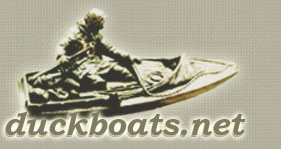Steve Sanford
Well-known member
All~
A member recently asked me for guidance rehabbing some Canada Goose silhouettes of unknown maker. They are made from 1/8-inch Masonite - smooth on one side, rough on the other. I asked him to mail me one....
View attachment DS 01.JPG
They appear to be factory-made.
View attachment DS 02 head closeup.JPG
The heads are riveted to the bodies.
View attachment DS 03 rivet.JPG
The tubular steel legs notch onto the bodies but are removable.
View attachment DS 04 leg detail.JPG
Here's the notch on the upper end.
View attachment DS 05 leg slot.JPG
The lower end is flattened. I imagine this helps penetrate the ground and prevent weather-vaning.
View attachment DS 06 leg point.JPG
There is a bunch of them.
View attachment DS 41 - full rig.jpg
Most heads are "feeders"....
View attachment DS 43 - heads.jpg
There are just a few uprights.
View attachment DS 42 - high head.jpg
Any ideas as to who made them? Where? When?
I start the rehab of a sample bird in the next post.....
SJS
A member recently asked me for guidance rehabbing some Canada Goose silhouettes of unknown maker. They are made from 1/8-inch Masonite - smooth on one side, rough on the other. I asked him to mail me one....
View attachment DS 01.JPG
They appear to be factory-made.
View attachment DS 02 head closeup.JPG
The heads are riveted to the bodies.
View attachment DS 03 rivet.JPG
The tubular steel legs notch onto the bodies but are removable.
View attachment DS 04 leg detail.JPG
Here's the notch on the upper end.
View attachment DS 05 leg slot.JPG
The lower end is flattened. I imagine this helps penetrate the ground and prevent weather-vaning.
View attachment DS 06 leg point.JPG
There is a bunch of them.
View attachment DS 41 - full rig.jpg
Most heads are "feeders"....
View attachment DS 43 - heads.jpg
There are just a few uprights.
View attachment DS 42 - high head.jpg
Any ideas as to who made them? Where? When?
I start the rehab of a sample bird in the next post.....
SJS
